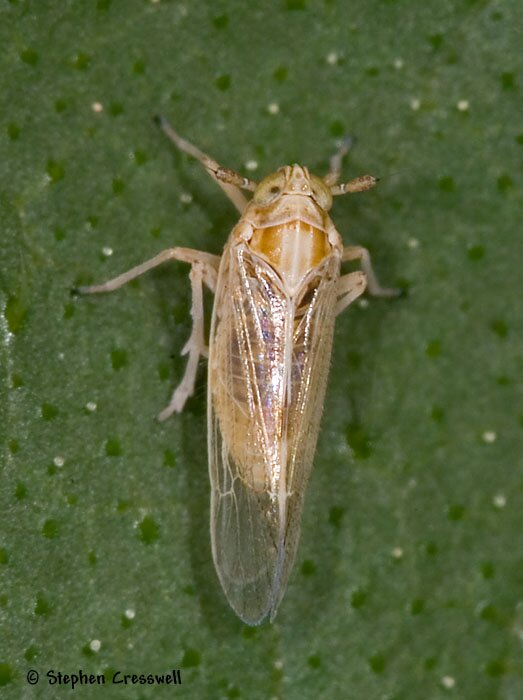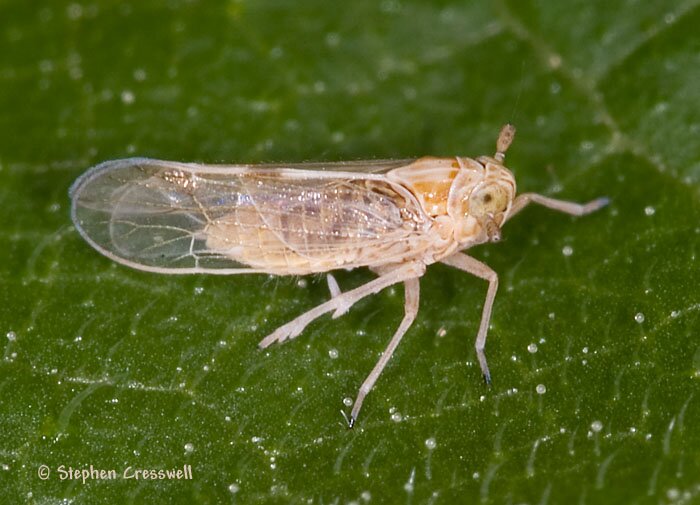
Family: Delphacidae
Subfamily: Delphacinae
Length: 3.3-4.0 mm
Metadelphax propinqua features pale carinae on the frons, with the area between the carinae usually darker and mottled.
This species has an enormous number of synonyms, and until recently was placed in the genus Toya. Gonzon and Bartlett (2007) note that because of this species wide distribution and variation of morphological traits it has been redescribed multiple times under different names.
The range includes practically all countries of North and South America and the Caribbean. It is also found in Australia, Asia, Europe, and Africa.
Metadelphax propinqua is widespread in West Virginia where it feeds and oviposits on various grasses.
Raatikainen and Vasarainen (1990) studied the biology of this species, collecting the hoppers in Turkey and raising them under laboratory conditions in Finland. They reported that Metadelphax propinqua exists in a short-winged and a long-winged form, and a very small percentage were intermediate between the two. Examining 5,000 of the hoppers and sorting them as brachypterous or macropterous, the researchers found that only 5 (all females) were brachypterous. In research the following year the nymphs were given more hours of light per day (only 5 hours of day without light); of 399 that matured, 18 females and one male were brachypterous, while two were intermediate.
Raatikainen and Vasarainen traced the life history of Metadelphax propinqua in the laboratory, finding that females each laid an average of about 1,100 eggs, and that the eggs took about 12 days to hatch. The nymphs took about 19 days to move through the five instars. The mean adult lifespan of the species was 51 days for females, and a little less for the males. The authors speculated that the number of generations per year could be 3-10.

Left: Two of the traits that mark Delphacid hoppers are the prominent, thickened antennae, and the inward-pointing spur at the base of the hind tarsi.


